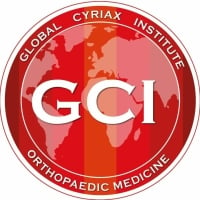Ankle sprain bandaging
Video and article produced and written by Hristo Dimitrov, PT, PhD, Cyriax team Bulgaria
Ankle sprain (supination or inversion trauma) is one of the most common injuries in musculoskeletal medicine (Garrick 1977, Collins & Comstock 2008, Davidson et al. 2008).
In addition to the injured anterolateral capsuloligamentous structures, further structures can
be involved: subluxation of the os cuboideum, overstretch of the N. peroneus superficialis.
Recurrences are common, an increasing laxity up to real instability may occur. Therapeutically it
is the main aim to prevent such a development (Hertel 2008, Santos & Liu 2008, Van Rijn et al.
2008).
The first phase of therapy concerns the basic injury management. This means to reduce ankle joint/ foot swelling and pain. In case there is no surgery indications, regular or adhesive bandages traditionally take care of immobilization. Special bandaging application adopted from Manual Lymph Drainage/ Compression bandaging approach could be more beneficial to reduce swelling, hematoma and pain.
Combination of 2 cm wide foam, short stretch bandages and adhesive tapes can supply sufficient optimal immobilization without limiting all movements in the ankle joint, just in injury direction.
At the same time edema will be evacuated from injured area and this will reduce pain and improve healing phases.
Expected effects of MLD and compression bandaging application:
- Increased lymphatic vessels contractions
- Shifting of lymph in tissue channels and subcutaneous valveless lymph vessel system
- Pain reduction
- Prevention of edema or hematoma shifting in the distal parts of the extremities
- Massage effect created by muscle contraction and joint movement
- Improving patient feeling for stability of the ankle
The bandage application should be worn 24 hours, then the result is checked from the physiotherapist and if it is necessary we can put the bandages again for some days. After reducing of swelling deep frictions, proprioception is following
